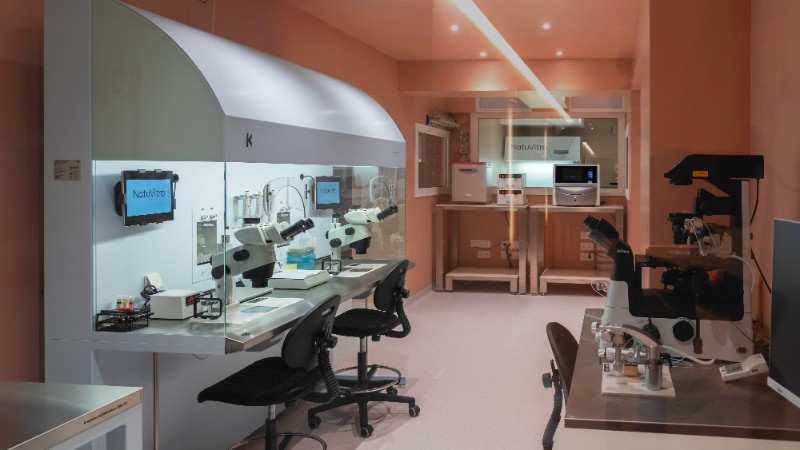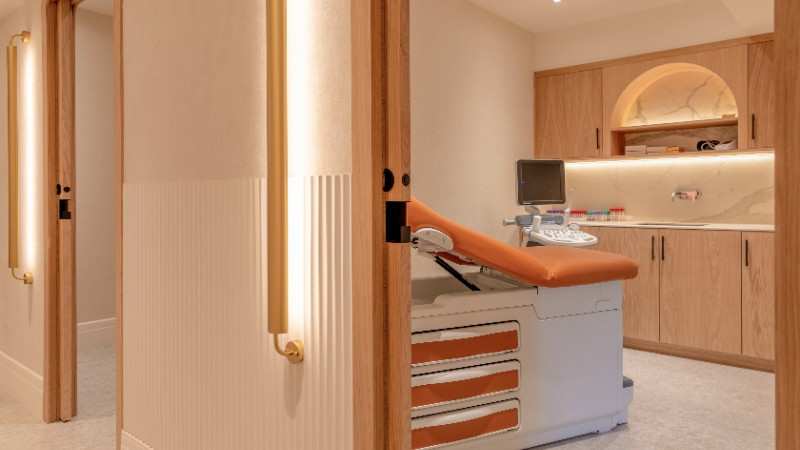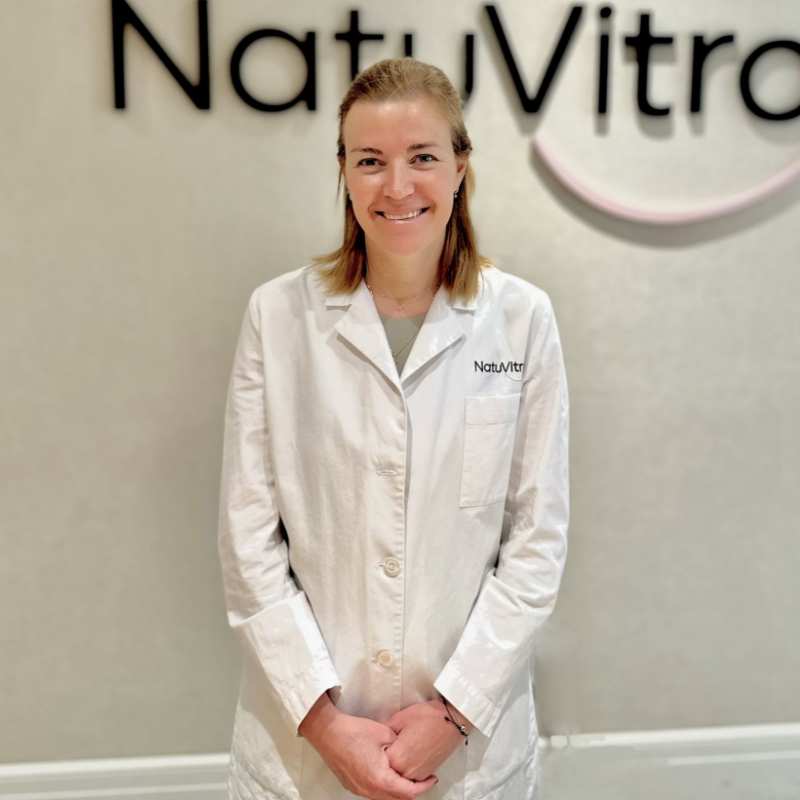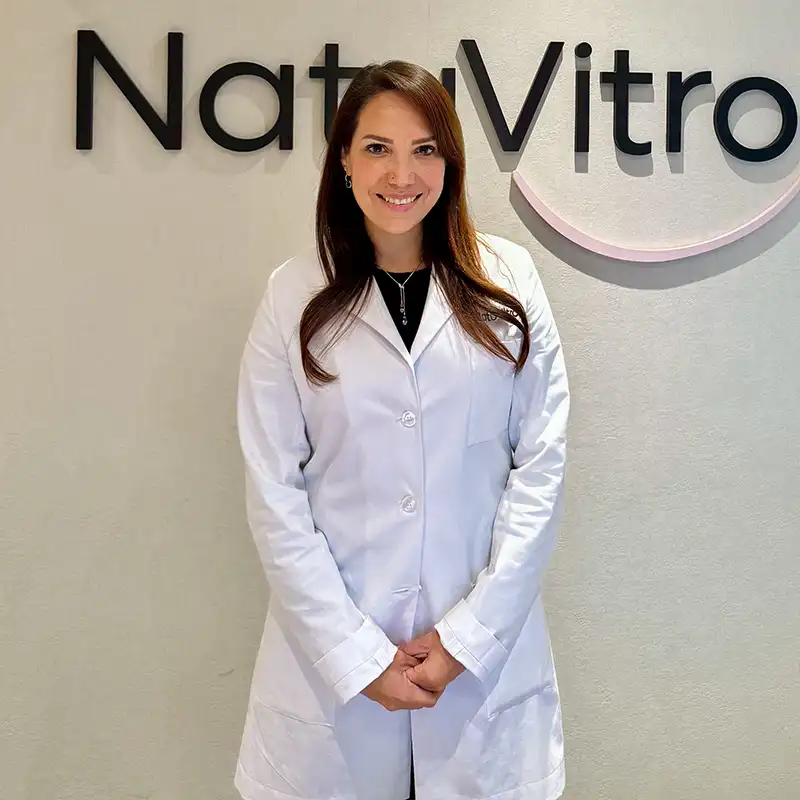
WHAT YOU NEED TO KNOW
- Endometriosis derives from the word “endometrium,” which is the tissue that lines the uterus. Patients with endometriosis have tissue similar to the endometrium outside the uterus.
- It is estimated that endometriosis affects 2 to 10% of women aged 25 to 40.
- Women with endometriosis are more likely to experience infertility or have difficulty getting pregnant.
- Symptoms of endometriosis may include excessive menstrual cramps, heavy or abnormal menstrual flow, and pain during sexual intercourse.
- Laparoscopy, a minimally invasive surgical procedure, can be used to diagnose and definitively treat endometriosis.
A woman's uterus is lined with endometrial tissue. This lining is called the endometrium. With each menstrual cycle, the body develops a new endometrium in preparation for a fertilized egg. Endometriosis is a condition in which endometrial tissue grows outside the uterus.
What is endometriosis?
Endometriosis affects up to 10% of women between the ages of 15 and 44. It most commonly occurs in or around the reproductive organs in the pelvis or abdomen, including:
- The fallopian tubes
- The ligaments that support the uterus (uterosacral ligaments)
- The pelvic cavity wall
- The ovaries
- The outer surface of the uterus
- The space between the uterus and the rectum or bladder
More rarely, it can also develop in and around:
- The bladder
- The cervix
- The intestines
- The rectum
- The stomach (abdomen)
- The vagina or vulva
The endometrial tissue that grows in these areas is not shed during the menstrual cycle, unlike healthy endometrial tissue found within the uterus. The accumulation of abnormal tissue outside the uterus can lead to inflammation, scarring, and painful cysts. It can also cause fibrous tissue to accumulate between reproductive organs, making them "stick" together.
Causes of endometriosis
Doctors are not sure what causes endometriosis, but there are some theories regarding it:
- Transport through blood or the lymphatic system: endometrial tissue is transported to other parts of the body by the blood or lymphatic system, in the same way that cancer cells can spread throughout the body.
- Direct transplantation: endometrial cells may adhere to the abdominal walls or other parts of the body after surgery, such as a cesarean section or hysterectomy.
- Genetics: endometriosis seems to affect some families more frequently than others; thus, there could be a genetic link to this disease.
- Retrograde menstruation: endometrial tissue ends up in the fallopian tubes and abdomen instead of leaving the body during menstruation.
- Transformation: other cells in the body may turn into endometrial cells and start to grow outside the endometrium.
Symptoms of endometriosis
The most common signs of endometriosis are pain and infertility. Pain from endometriosis often manifests in the following ways:
- Painful menstrual cramps that may affect the abdomen (stomach) or lower back
- Pain during or after sexual intercourse.
Other symptoms may occur:
- Diarrhea or constipation during menstruation
- Fatigue or lack of energy
- Heavy or irregular periods
- Pain when urinating or having a bowel movement during the menstrual period
- Spotting or bleeding between periods.
The experience of endometriosis is different from person to person. Women with endometriosis may experience some of these symptoms, all of these symptoms, or none of them. Severe pain or other symptoms are not necessarily a sign of more severe endometriosis.
Risk factors for endometriosis
Research shows that certain factors increase the risk of developing endometriosis:
- A mother, sister, or daughter with endometriosis
- An abnormal uterus, diagnosed by a doctor
- Early periods (before age 11)
- Shorter periods (less than 27 days on average)
- Heavy periods lasting more than seven days.
Certain factors may reduce the risk of endometriosis:
- Pregnancy and breastfeeding
- Having your first period after age 14
- Consumption of fruits, particularly citrus
Prevention of endometriosis
Endometriosis is an idiopathic disease, meaning with no known cause. There are also no specific ways to prevent endometriosis. However, knowing the symptoms and whether you are at higher risk may help you know when to address the issue with a doctor.
Endometriosis and infertility.
Endometriosis is one of the most common conditions related to female infertility. The American Society for Reproductive Medicine found that between 24 and 50 percent of women with infertility have endometriosis. Mild or moderate cases of endometriosis may only cause temporary infertility. Surgery to remove endometrial tissue may help a woman become pregnant.
Doctors are not sure how endometriosis affects fertility. The scar tissue from endometriosis may affect the release of eggs from the ovaries or block the path of the egg through the fallopian tubes, preventing it from reaching the uterus. Endometriosis can also damage sperm or fertilized eggs before they implant in the uterus.
Many women with endometriosis or infertility related to endometriosis can still become pregnant and carry their pregnancy to a successful conclusion. There are treatment options, including fertility preservation and in vitro fertilization (IVF), that can help women become pregnant.
Diagnosis of endometriosis.
Doctors may suspect endometriosis based on your history or a physical exam, and may use the following tools to diagnose endometriosis:
- Laparoscopy: During this procedure, the doctor makes a small incision in the abdomen and inserts a thin tube equipped with a light and camera. This allows the doctor to examine the tissues inside and around the uterus and detect signs of endometrial tissue growth.
- Biopsy: if the doctor finds suspicious tissue, they may use a small device to take some cells and send them to the laboratory. A pathologist examines the tissue under a microscope. A biopsy is necessary for a definitive diagnosis of endometriosis.
How to diagnose endometriosis without surgery?
There is no laboratory test, procedure, or imaging technique to diagnose endometriosis without surgery. However, imaging tests may be useful in looking for signs of endometriosis. Common imaging diagnostic tests include:
- Ultrasound: this procedure uses sound waves to visualize organs. Transvaginal ultrasounds use a small wand inserted into the vagina to view the uterus, pelvic area, and reproductive organs.
- MRI: This non-invasive test uses magnetic waves to examine organs and tissues inside the body.
Stages of endometriosis
Doctors classify endometriosis from stage 1 to stage 4. The stages are based on where endometrial tissue is found in the body, how extensive it is, and how much tissue is present in those areas.
The fact that endometriosis is more advanced does not always mean that the symptoms will be more severe or the pain more intense. Some women with stage 4 endometriosis have few or no symptoms, while those in stage 1 may have severe symptoms.
Treatment of endometriosis
There is no lasting treatment for endometriosis, but doctors can offer treatments that will help you manage it. The choice of the right treatment depends on many factors, including your age and symptoms. Doctors will also ask if you wish to have children, which can help determine the best treatment options.
Non-surgical treatments for endometriosis
The most common treatments for endometriosis that do not require surgery are hormonal therapy and pain management.
The tissues of endometriosis are affected by hormones in the same way that endometrial tissues inside the uterus are. Hormonal changes that occur during the menstrual cycle can worsen the pain of endometriosis.
Treatments that include hormonal therapy may change hormone levels or prevent your body from producing certain hormones. Hormonal therapy can affect your ability to become pregnant, so it may not be suitable for everyone.
Hormonal therapy can be administered in the form of pills, injections, or nasal sprays. The most common options are:
- Oral contraceptives of estrogen and progesterone to control hormones.
- Progestins to stop periods and the growth of endometrial tissue
- Gonadotropin-releasing hormone antagonist to limit ovarian hormones
- Gonadotropin-releasing hormone agonist to stop ovarian hormones
Pain relievers, including non-steroidal anti-inflammatory drugs (NSAIDs) such as ibuprofen, may be effective in managing endometriosis pain. A doctor may also discuss the need for prescription medications for more intense pain.
Laparoscopy for endometriosis
Patients with more advanced endometriosis, pain that does not improve with other treatments, or those trying to conceive may need surgery. Laparoscopy is the most common surgical procedure used by doctors to treat endometriosis.
During this procedure, the surgeon makes a few small incisions in the abdomen. In one of the incisions, they insert a thin tube equipped with a light and camera. In the other incisions, they introduce small instruments. These tools can remove endometrial tissue (excision) or use intense heat to destroy the tissue (ablation).
The surgeon may also remove any scar tissue that has accumulated in the area. Laparoscopic surgeries generally have a shorter recovery time and smaller scars than traditional open surgeries (laparotomy).
Laparotomy for endometriosis
In some cases, a doctor may need to perform a laparotomy for endometriosis instead of a laparoscopy. This means that the doctor will make a larger incision (cut) in the abdomen to remove endometrial tissue. This method is uncommon.
Removal of endometrial tissue through laparoscopy or laparotomy may provide short-term pain relief. However, the pain may return.
Hysterectomy for endometriosis
A hysterectomy is a surgical procedure that involves the removal of the uterus. Doctors may recommend this option to treat endometriosis. Your doctor may also recommend the removal of the ovaries (oophorectomy) with or without hysterectomy. This operation stops hormone secretion and should permanently treat endometriosis, but it puts you into menopause.
Removal of the ovaries significantly reduces estrogen levels and slows or stops the growth of endometrial tissue. But it carries the risks and side effects of menopause, including hot flashes, bone loss, heart disease, reduced sex drive, memory problems, depression, or anxiety. For these reasons, the decision to proceed with an oophorectomy is made by the patient and their doctor based on specific factors and the patient’s personal goals.
After a hysterectomy, you will no longer have a uterus and will no longer be able to become pregnant or carry a pregnancy. If you wish to have a child, talk to your doctor about other treatment options.
Women who have undergone an oophorectomy (removal of the ovaries) but have retained their uterus may become pregnant through IVF. Doctors can collect eggs from the ovaries before surgery and store them to fertilize and implant in the uterus later, or use an egg donor.
Prognosis after an endometriosis diagnosis
Treatment helps many women relieve the symptoms and pain of endometriosis. However, endometrial tissue may regrow and symptoms may reappear even after surgery. Schedule regular check-ups with your doctor to detect signs of growth or recurrence of endometrial tissue.
If you are facing fertility issues related to endometriosis, NatuVitro is here to offer you specialized support tailored to your needs. Endometriosis can have a significant impact on fertility and our experienced team is well-equipped to address these particular issues. Contact NatuVitro to find effective solutions for fertility problems related to endometriosis. Our dedicated professionals are committed to guiding you through the process by providing you with a personalized approach to fertility treatment.
Do not let endometriosis stand in the way of your dream of becoming a mother: contact NatuVitro and receive specialized and attentive support.
Our experts are ready to examine your case history, clarify your choices, and address every question you have.
Don't wait to make informed decisions – your personalized guidance awaits!
- Spain (España)+34
- France (La France)+33
- Italy (Italia)+39
- United Kingdom+44
- United States+1
- Belgium (België)+32
- Switzerland (Schweiz/Suisse)+41
- Germany (Deutschland)+49
- Netherlands (Nederland)+31
- Afghanistan (افغانستان)+93
- Albania (Shqipëri)+355
- Algeria (الجزائر)+213
- American Samoa+1
- Andorra+376
- Angola+244
- Anguilla+1
- Antigua and Barbuda+1
- Argentina+54
- Armenia (Հայաստան)+374
- Aruba+297
- Ascension Island+247
- Australia+61
- Austria (Österreich)+43
- Azerbaijan (Azərbaycan)+994
- Bahamas+1
- Bahrain (البحرين)+973
- Bangladesh (বাংলাদেশ)+880
- Barbados+1
- Belarus (Беларусь)+375
- Belize+501
- Benin (Bénin)+229
- Bermuda+1
- Bhutan (འབྲུག)+975
- Bolivia+591
- Bosnia and Herzegovina (Босна и Херцеговина)+387
- Botswana+267
- Brazil (Brasil)+55
- British Indian Ocean Territory+246
- British Virgin Islands+1
- Brunei+673
- Bulgaria (България)+359
- Burkina Faso+226
- Burundi (Uburundi)+257
- Cambodia (កម្ពុជា)+855
- Cameroon (Cameroun)+237
- Canada+1
- Cape Verde (Kabu Verdi)+238
- Caribbean Netherlands+599
- Cayman Islands+1
- Central African Republic (République centrafricaine)+236
- Chad (Tchad)+235
- Chile+56
- China (中国)+86
- Christmas Island+61
- Cocos (Keeling) Islands+61
- Colombia+57
- Comoros (جزر القمر)+269
- Congo (DRC) (Jamhuri ya Kidemokrasia ya Kongo)+243
- Congo (Republic) (Congo-Brazzaville)+242
- Cook Islands+682
- Costa Rica+506
- Côte d’Ivoire+225
- Croatia (Hrvatska)+385
- Cuba+53
- Curaçao+599
- Cyprus (Κύπρος)+357
- Czech Republic (Česká republika)+420
- Denmark (Danmark)+45
- Djibouti+253
- Dominica+1
- Dominican Republic (República Dominicana)+1
- Ecuador+593
- Egypt (مصر)+20
- El Salvador+503
- Equatorial Guinea (Guinea Ecuatorial)+240
- Eritrea+291
- Estonia (Eesti)+372
- Eswatini+268
- Ethiopia+251
- Falkland Islands (Islas Malvinas)+500
- Faroe Islands (Føroyar)+298
- Fiji+679
- Finland (Suomi)+358
- French Guiana (Guyane française)+594
- French Polynesia (Polynésie française)+689
- Gabon+241
- Gambia+220
- Georgia (საქართველო)+995
- Ghana (Gaana)+233
- Gibraltar+350
- Greece (Ελλάδα)+30
- Greenland (Kalaallit Nunaat)+299
- Grenada+1
- Guadeloupe+590
- Guam+1
- Guatemala+502
- Guernsey+44
- Guinea (Guinée)+224
- Guinea-Bissau (Guiné Bissau)+245
- Guyana+592
- Haiti+509
- Honduras+504
- Hong Kong (香港)+852
- Hungary (Magyarország)+36
- Iceland (Ísland)+354
- India (भारत)+91
- Indonesia+62
- Iran (ایران)+98
- Iraq (العراق)+964
- Ireland+353
- Isle of Man+44
- Israel (ישראל)+972
- Italy (Italia)+39
- Jamaica+1
- Japan (日本)+81
- Jersey+44
- Jordan (الأردن)+962
- Kazakhstan (Казахстан)+7
- Kenya+254
- Kiribati+686
- Kosovo+383
- Kuwait (الكويت)+965
- Kyrgyzstan (Кыргызстан)+996
- Laos (ລາວ)+856
- Latvia (Latvija)+371
- Lebanon (لبنان)+961
- Lesotho+266
- Liberia+231
- Libya (ليبيا)+218
- Liechtenstein+423
- Lithuania (Lietuva)+370
- Luxembourg+352
- Macau (澳門)+853
- North Macedonia (Македонија)+389
- Madagascar (Madagasikara)+261
- Malawi+265
- Malaysia+60
- Maldives+960
- Mali+223
- Malta+356
- Marshall Islands+692
- Martinique+596
- Mauritania (موريتانيا)+222
- Mauritius (Moris)+230
- Mayotte+262
- Mexico (México)+52
- Micronesia+691
- Moldova (Republica Moldova)+373
- Monaco+377
- Mongolia (Монгол)+976
- Montenegro (Crna Gora)+382
- Montserrat+1
- Morocco (المغرب)+212
- Mozambique (Moçambique)+258
- Myanmar (Burma) (မြန်မာ)+95
- Namibia (Namibië)+264
- Nauru+674
- Nepal (नेपाल)+977
- New Caledonia (Nouvelle-Calédonie)+687
- New Zealand+64
- Nicaragua+505
- Niger (Nijar)+227
- Nigeria+234
- Niue+683
- Norfolk Island+672
- North Korea (조선 민주주의 인민 공화국)+850
- Northern Mariana Islands+1
- Norway (Norge)+47
- Oman (عُمان)+968
- Pakistan (پاکستان)+92
- Palau+680
- Palestine (فلسطين)+970
- Panama (Panamá)+507
- Papua New Guinea+675
- Paraguay+595
- Peru (Perú)+51
- Philippines+63
- Poland (Polska)+48
- Portugal+351
- Puerto Rico+1
- Qatar (قطر)+974
- Réunion (La Réunion)+262
- Romania (România)+40
- Russia (Россия)+7
- Rwanda+250
- Saint Barthélemy+590
- Saint Helena+290
- Saint Kitts and Nevis+1
- Saint Lucia+1
- Saint Martin (Saint-Martin (partie française))+590
- Saint Pierre and Miquelon (Saint-Pierre-et-Miquelon)+508
- Saint Vincent and the Grenadines+1
- Samoa+685
- San Marino+378
- São Tomé and Príncipe (São Tomé e Príncipe)+239
- Saudi Arabia (المملكة العربية السعودية)+966
- Senegal (Sénégal)+221
- Serbia (Србија)+381
- Seychelles+248
- Sierra Leone+232
- Singapore+65
- Sint Maarten+1
- Slovakia (Slovensko)+421
- Slovenia (Slovenija)+386
- Solomon Islands+677
- Somalia (Soomaaliya)+252
- South Africa+27
- South Korea (대한민국)+82
- South Sudan (جنوب السودان)+211
- Spain (España)+34
- Sri Lanka (ශ්රී ලංකාව)+94
- Sudan (السودان)+249
- Suriname+597
- Svalbard and Jan Mayen+47
- Sweden (Sverige)+46
- Syria (سوريا)+963
- Taiwan (台灣)+886
- Tajikistan+992
- Tanzania+255
- Thailand (ไทย)+66
- Timor-Leste+670
- Togo+228
- Tokelau+690
- Tonga+676
- Trinidad and Tobago+1
- Tunisia (تونس)+216
- Turkey (Türkiye)+90
- Turkmenistan+993
- Turks and Caicos Islands+1
- Tuvalu+688
- U.S. Virgin Islands+1
- Uganda+256
- Ukraine (Україна)+380
- United Arab Emirates (الإمارات العربية المتحدة)+971
- Uruguay+598
- Uzbekistan (Oʻzbekiston)+998
- Vanuatu+678
- Vatican City (Città del Vaticano)+39
- Venezuela+58
- Vietnam (Việt Nam)+84
- Wallis and Futuna (Wallis-et-Futuna)+681
- Western Sahara (الصحراء الغربية)+212
- Yemen (اليمن)+967
- Zambia+260
- Zimbabwe+263
- Åland Islands+358
Visit our clinic
Location
Call us now
Leave a message







